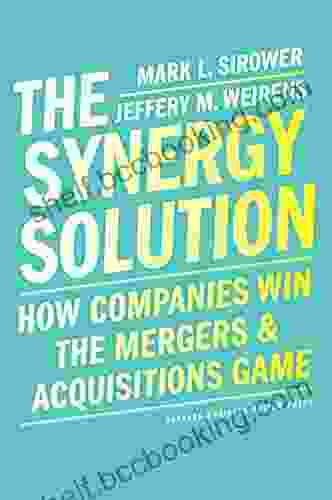Predicting Stock Returns: Implications for Asset Pricing

Predicting stock returns is a challenging but important task for investors. The ability to accurately forecast future returns can lead to significant profits, while the inability to do so can lead to substantial losses.
This book provides a comprehensive overview of the latest research on predicting stock returns. It covers a wide range of topics, including the use of fundamental and technical analysis, the role of sentiment and behavioral finance, and the development of new machine learning and artificial intelligence techniques.
Fundamental analysis is the study of a company's financial statements and other publicly available information to assess its intrinsic value. The goal of fundamental analysis is to identify companies that are trading below their intrinsic value, and to buy these companies in the hope that their stock prices will rise as the market recognizes their true value.
4.7 out of 5
| Language | : | English |
| File size | : | 1101 KB |
| Text-to-Speech | : | Enabled |
| Screen Reader | : | Supported |
| Enhanced typesetting | : | Enabled |
| Word Wise | : | Enabled |
| Print length | : | 153 pages |
There are a number of different fundamental analysis techniques, but some of the most common include:
- Financial ratios: Financial ratios are used to compare a company's financial performance to that of other companies in the same industry. Common financial ratios include the price-to-earnings ratio (P/E ratio),the price-to-book ratio (P/B ratio),and the debt-to-equity ratio.
- Discounted cash flow analysis: Discounted cash flow analysis is a technique used to estimate the present value of a company's future cash flows. This information can then be used to determine whether a company is trading at a fair price.
- Industry analysis: Industry analysis involves studying the competitive landscape of a particular industry. This information can be used to identify companies that are well-positioned to succeed in the future.
Technical analysis is the study of past stock prices and trading volume to identify patterns that can be used to predict future price movements. The goal of technical analysis is to identify stocks that are likely to rise in price, and to buy these stocks before the price increase occurs.
There are a number of different technical analysis techniques, but some of the most common include:
- Trend analysis: Trend analysis involves identifying the overall direction of a stock's price movement. This information can be used to identify stocks that are in a bull market or a bear market.
- Chart patterns: Chart patterns are specific formations that appear on a stock's price chart. These patterns can be used to predict future price movements.
- Technical indicators: Technical indicators are mathematical formulas that are used to analyze past stock prices and trading volume. These indicators can be used to identify trends, support and resistance levels, and overbought and oversold conditions.
Sentiment and behavioral finance is the study of how investors' emotions and biases can affect stock prices. The goal of sentiment and behavioral finance is to identify ways to exploit these emotions and biases to make profitable investments.
Some of the most common sentiment and behavioral finance biases include:
- Overconfidence: Investors tend to be overconfident in their ability to predict stock prices. This can lead them to make poor investment decisions.
- Confirmation bias: Investors tend to seek out information that confirms their existing beliefs. This can lead them to ignore information that contradicts their beliefs.
- Herding behavior: Investors tend to follow the crowd. This can lead them to buy stocks that are popular, even if they are not a good investment.
Machine learning and artificial intelligence are rapidly changing the way that we predict stock returns. These technologies can be used to analyze vast amounts of data, identify patterns, and make predictions.
Some of the most common machine learning and artificial intelligence techniques used to predict stock returns include:
- Neural networks: Neural networks are a type of machine learning algorithm that can be used to learn from data. Neural networks can be trained to identify patterns in stock prices and to predict future price movements.
- Support vector machines: Support vector machines are another type of machine learning algorithm that can be used to classify data. Support vector machines can be trained to identify stocks that are likely to rise in price, and to buy these stocks before the price increase occurs.
- Natural language processing: Natural language processing is a branch of artificial intelligence that deals with the understanding of human language. Natural language processing can be used to analyze news articles, social media posts, and other forms of text data to identify sentiment and other factors that can affect stock prices.
Predicting stock returns is a challenging but important task for investors. The ability to accurately forecast future returns can lead to significant profits, while the inability to do so can lead to substantial losses.
This book provides a comprehensive overview of the latest research on predicting stock returns. It covers a wide range of topics, including the use of fundamental and technical analysis, the role of sentiment and behavioral finance, and the development of new machine learning and artificial intelligence techniques.
By understanding the latest research on predicting stock returns, investors can make better investment decisions and improve their chances of achieving their financial goals.
4.7 out of 5
| Language | : | English |
| File size | : | 1101 KB |
| Text-to-Speech | : | Enabled |
| Screen Reader | : | Supported |
| Enhanced typesetting | : | Enabled |
| Word Wise | : | Enabled |
| Print length | : | 153 pages |
Do you want to contribute by writing guest posts on this blog?
Please contact us and send us a resume of previous articles that you have written.
 Book
Book Novel
Novel Page
Page Chapter
Chapter Text
Text Story
Story Genre
Genre Reader
Reader Library
Library Paperback
Paperback E-book
E-book Magazine
Magazine Newspaper
Newspaper Paragraph
Paragraph Sentence
Sentence Bookmark
Bookmark Shelf
Shelf Glossary
Glossary Bibliography
Bibliography Foreword
Foreword Preface
Preface Synopsis
Synopsis Annotation
Annotation Footnote
Footnote Manuscript
Manuscript Scroll
Scroll Codex
Codex Tome
Tome Bestseller
Bestseller Classics
Classics Library card
Library card Narrative
Narrative Biography
Biography Autobiography
Autobiography Memoir
Memoir Reference
Reference Encyclopedia
Encyclopedia Jeff Hobbs
Jeff Hobbs Jay Margolis
Jay Margolis Jane Bernstein
Jane Bernstein John Foster
John Foster Richard Jefferies
Richard Jefferies Peter L Bernstein
Peter L Bernstein Janet Skirving
Janet Skirving Jay Revell
Jay Revell Jane Stern
Jane Stern Jason Ross
Jason Ross Jay P Decima
Jay P Decima Jean Barbre
Jean Barbre Jan Jarboe Russell
Jan Jarboe Russell Mason Bell
Mason Bell Michael Gross
Michael Gross Steven Konkoly
Steven Konkoly Jeevan Vasagar
Jeevan Vasagar Lloyd Cordill
Lloyd Cordill Jean Pederson
Jean Pederson Tom Victor
Tom Victor
Light bulbAdvertise smarter! Our strategic ad space ensures maximum exposure. Reserve your spot today!

 David Foster WallaceRooftop Urban Agriculture: Revolutionizing Food Systems in the 21st Century
David Foster WallaceRooftop Urban Agriculture: Revolutionizing Food Systems in the 21st Century
 Jeffery BellMaster the Art of Difficult Conversations at Work: Your Essential Guide to...
Jeffery BellMaster the Art of Difficult Conversations at Work: Your Essential Guide to...
 Ivan TurgenevUnlocking the Enigma of Professional Ethics in Criminal Justice: An In-Depth...
Ivan TurgenevUnlocking the Enigma of Professional Ethics in Criminal Justice: An In-Depth... Herb SimmonsFollow ·16k
Herb SimmonsFollow ·16k Jeremy CookFollow ·3.8k
Jeremy CookFollow ·3.8k Edgar HayesFollow ·3.9k
Edgar HayesFollow ·3.9k Vernon BlairFollow ·4.7k
Vernon BlairFollow ·4.7k Jorge AmadoFollow ·13.6k
Jorge AmadoFollow ·13.6k Richard AdamsFollow ·7.1k
Richard AdamsFollow ·7.1k Don ColemanFollow ·14.1k
Don ColemanFollow ·14.1k Harold PowellFollow ·5.6k
Harold PowellFollow ·5.6k

 Carlos Drummond
Carlos DrummondHow Companies Win the Mergers and Acquisitions Game:...
In today's...

 Craig Blair
Craig BlairMastering The Delicate Balance Between Power And Peace
In today's ever-evolving world, the interplay...

 Wade Cox
Wade CoxUnveiling the Zen of Golf: A Journey to Inner Mastery
: The Harmony of Mind,...

 Gerald Bell
Gerald BellDarkness Triumphant: Three of the Catmage Chronicles
Synopsis ...

 Henry James
Henry JamesDarkness Rising: One of the Catmage Chronicles
A Captivating Fantasy Adventure...
4.7 out of 5
| Language | : | English |
| File size | : | 1101 KB |
| Text-to-Speech | : | Enabled |
| Screen Reader | : | Supported |
| Enhanced typesetting | : | Enabled |
| Word Wise | : | Enabled |
| Print length | : | 153 pages |








